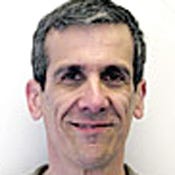Content-management software is critical to the telecom company's efforts to move more customer transactions to the Web.

BT Group plc has made the Web its primary channel for customer communications as its traditional residential phone business gets displaced by newer services such as broadband Internet and IT services.
The U.K. telecommunications company on Thursday reported fourth-quarter net profit of $801 million, up 44% from the year-earlier period. A good portion of that growth is tied to strong sales of its broadband Internet and IT services, accounting for about 25% of the company's revenue.
BT is experiencing an explosion in online transactions with half of its orders for retail broadband services now made online. The overall number of online transactions conducted with its customers tripled between 2003 and 2005, and is expected to double again between 2005 and 2006.
The company is "transforming itself from a traditional telco to an E-commerce company," says Stephen Stokols, BT's director of E-channels. Key to that transformation is Netcentricity, an in-house system developed to increase the number of its sales and services transactions conducted through the Web, and to develop a consistent process across BT's retail, wholesale, and global-services businesses for creating and publishing Web content.
Launched last year, Netcentricity is expected to boost online transactions to 28% of total transactions by 2007, up from 12% in 2003. The goal is to increase the number of Web transactions completed without the assistance of customer-service personnel or, where assistance is required, to enable personnel to view the same Web page as the customer, ensuring consistency of pricing, product, and promotional information.
Built using Interwoven's TeamSite content-management software and BEA Systems' WebLogic application server, Netcentricity has boosted the efficiency of content creation, management, and publishing for BT.com, the company's retail and business-customer site. Instead of having to push through all content requests to the marketing organization, individual business units and product lines are responsible for creating their own content, ensuring consistency of brand identity and pricing.
BT plans to extend Netcentricity beyond BT.com to create a single content architecture across all of its businesses, allowing content to be easily accessible for customers and employees such as field-service personnel. "We want to use Interwoven to provide content to all channels," Stokols says.
Still, there's a long way to go to achieve that vision. "We've achieved a degree of consolidation, but we still have issues where a customer will get different product descriptions or prices from BT.com and the call center," Stokols says. To fix that, BT plans to link its Siebel Systems call-center system to Netcentricity, so that content for contact centers as well as for the Web sites will be managed through Interwoven.
The company also is developing a library of digital assets such as images, graphics, and video, to enable business units to easily locate and use an appropriately rendered version of a digital asset. For example, conversion of an MPEG video into streaming-video format could be accomplished by someone without technical expertise. BT has licensed Interwoven's MediaBin digital-asset-management system, Stokols says, and will decide between using that product or an internally developed system within the next six weeks.
About the Author(s)
You May Also Like







